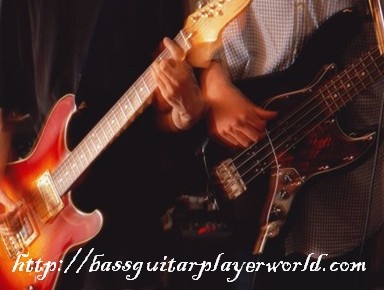How to Play Bass Guitar Arpeggios Like a Pro
 Guitar isn’t the only instrument that has advanced concepts. When used properly, the bass guitar can be just as interesting and dynamic as the electric guitar.
Guitar isn’t the only instrument that has advanced concepts. When used properly, the bass guitar can be just as interesting and dynamic as the electric guitar.
One of the most interesting concepts in bass is the arpeggio. Arpeggios are simply chords that are played note by note. The easiest way to create an arpeggio is to use a preexisting chord shape. Before we get into arpeggios, it is important that you first assess your skill level.
Be sure that you are familiar with basic chords such as triads, basic Major and minor keys, and basic musical intervals. It is important that you understand chord properties, as well as those of keys. Be sure you have a full understanding of how chords are built, as arpeggios are dependent upon the chords from which they are built.
Harmony And Melody Are 2 Totally Different Aspects
Next you need to understand the difference between harmony and melody. Harmony is when two or more voices ring out in unison, creating a single voice. Melody is a linear pattern in either ascending or descending order.
If we were to play an A minor scale, to play it is a melody we would play each note in order from either highest to lowest or lowest to highest. Because the pattern is moving in a single direction, it is a linear pattern.
 Now that you understand the key concepts behind building an arpeggio, let’s put them to use. As with all concepts, the easiest place to start is in the key of C Major.
Now that you understand the key concepts behind building an arpeggio, let’s put them to use. As with all concepts, the easiest place to start is in the key of C Major.
First off, we will need to build a basic C Major chord. The most basic chord is a triad, and in the key of C Major, a tonic triad consists of the notes C, E, and G. When we play a C Major triad, we are creating harmony.
To turn this triad into an arpeggio, we would simply need to play the notes C, E, and G in either ascending or descending order. This may sound fairly simple, and that is because it is; arpeggios are simple, yet impressive when put to proper application.
Taking It to a Higher Level
The neat thing about arpeggios is that they can be built off of scales. Using our C Major triad of C, E, and G, we can create a more dynamic arpeggio using the notes of the C Major scale. This is why it is important that you have a full understanding if basic keys and musical intervals. To build off of our C Major triad arpeggio, we simply need to choose intervals that will accentuate the arpeggio.
For instance, if we play our arpeggio from C to G, then jump a fifth to D, then return to G and descend, we add a richer, fuller and more complete sound to our arpeggio. The best way to add dynamics to an arpeggio is through trial and error. Some notes simply will not sound pleasant. Sometimes arpeggios are best left to their basic notes. These are things that can be assessed through experimentation.
Now that you know how to create bass guitar arpeggios, the next step is to try creating your own. Keep your mind open to expansion when working with arpeggios, but don’t feel it necessary to always add. Sometimes simplicity is best. Check out the slew of other bass guitar lessons that we offer on different sections of the site as well. Enjoy!
Check Out The Perfect Learning Tool For Bassists of All Skill Levels
JamPlay offers the best online bass instructions on the Internet. With hundreds of professionally recorded lessons, Jamplay is the ideal place to learn the basics and improve your bass playing skills. With great teachers and carefully planned lesson structures, I guarantee you will be able to take your bass playing to a higher level in no time.
Related Articles
Comments are closed.





